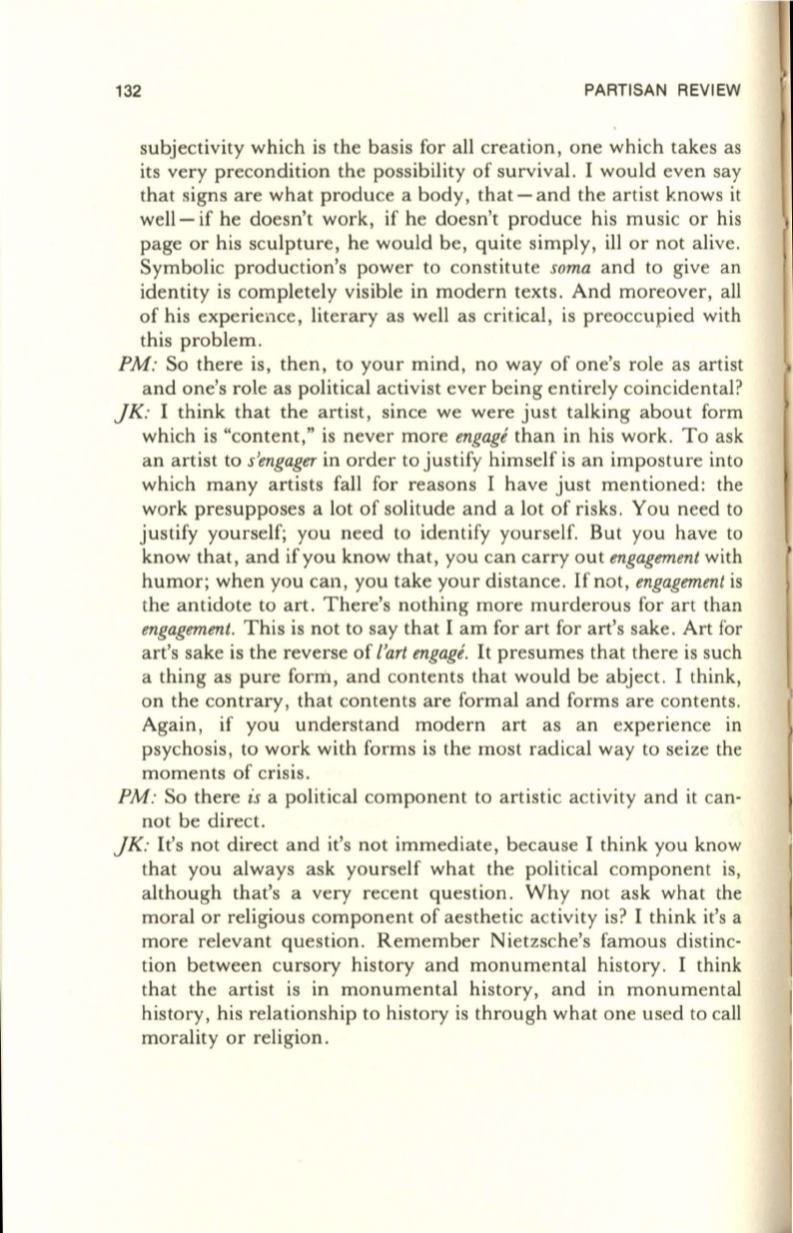
132
PARTISAN REVIEW
subjectivity which is the basis for all creation , one which takes as
its very precondition the possibility of survival. I would even say
that signs are what produce a body, that - and the artist knows it
well- if he doesn't work, if he doesn't produce his music or his
page or his sculpture , he would be, quite simply,
ill
or not alive.
Symbolic production's power to constitute
soma
and to give an
identity is completely visible in modern texts . And moreover, all
of his experience, literary as well as critical , is preoccupied with
this problem.
PM:
So there is, then, to your mind, no way of one's role as artist
and one's role as political activist ever being entirely coincidental?
JK:
I think that the artist, since we were just talking about form
which is "content," is never more
engage
than in his work. To ask
an artist to
s'engager
in order to justify himself is an imposture into
which many artists fall for reasons I have just mentioned: the
work presupposes a lot of solitude and a lot of risks . You need to
justify yourself; you need to identify yourself. But you have to
know that , and if you know that, you can carry out
engagement
with
humor; when you can, you take your distance. Hnot ,
engagement
is
the antidote to art. There's nothing more murderous for art than
engagement.
This is not to say that I am for art for art's sake . Art for
art's sake is the reverse of
['art engage.
It presumes that there is such
a thing as pure form, and contents that would be abject. I think,
on the contrary, that contents are formal and forms are contents.
Again, if you understand modern art as an experience in
psychosis, to work with forms is the most radical way to seize the
moments of crisis.
PM:
So there
is
a political component to artistic activity and it can–
not be direct.
JK:
It's not direct and it's not immediate, because I think you know
that you always ask yourself what the political component is ,
although that's a very recent question. Why not ask what the
moral or religious component of aesthetic activity is? I think it's a
more relevant question. Remember Nietzsche's famous distinc–
tion between cursory history and monumental history. I think
that the artist is in monumental history, and in monumental
history, his relationship to history is through what one used to call
morality or religion .


